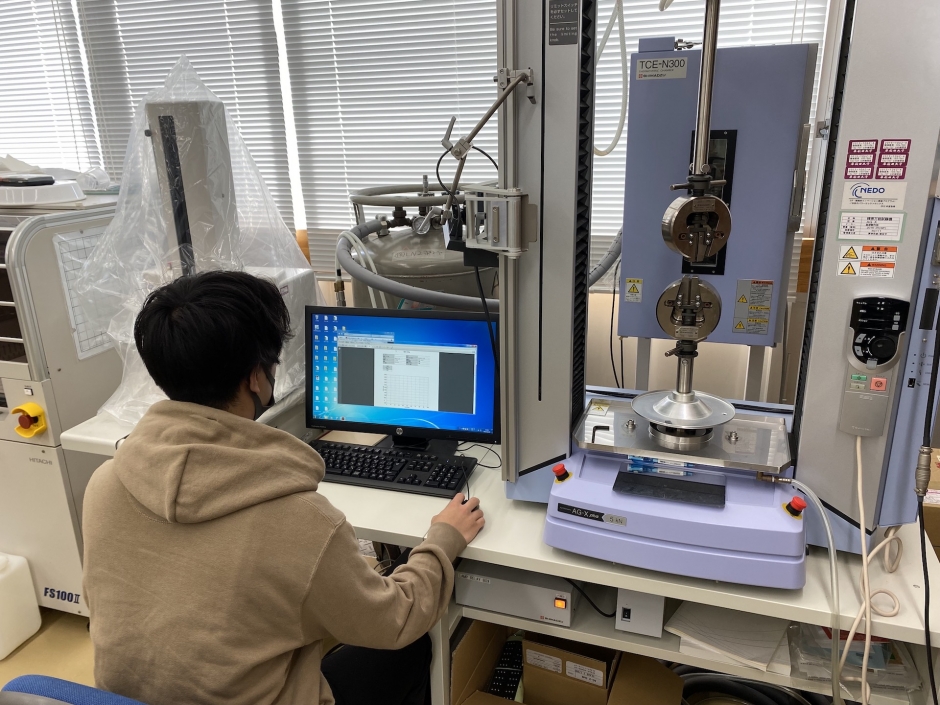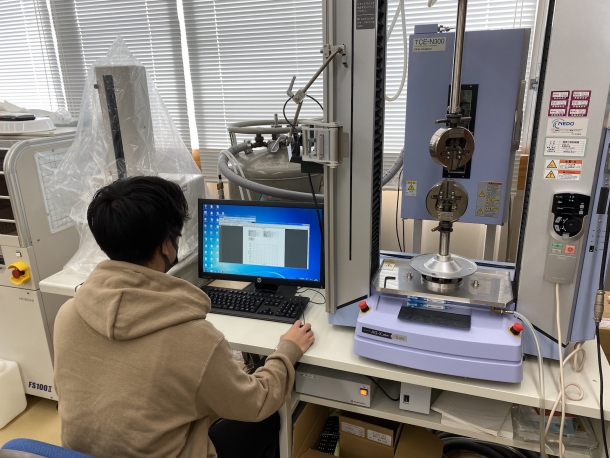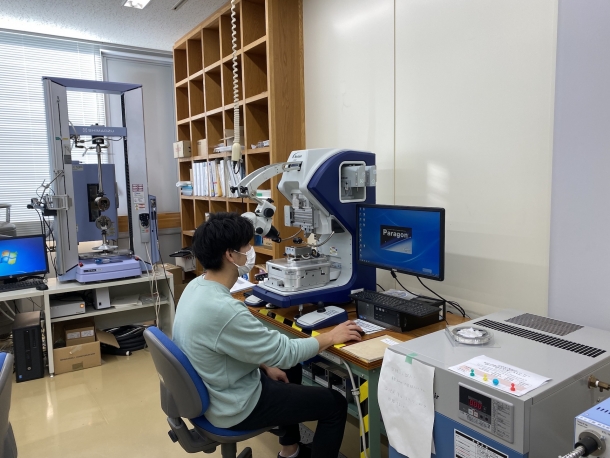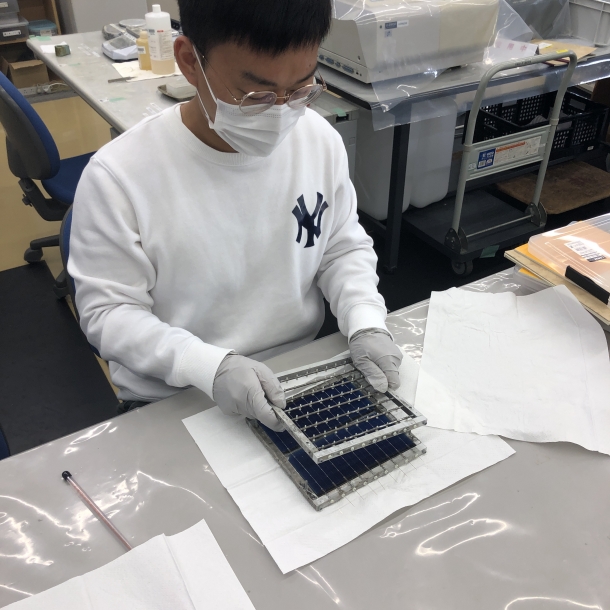- News
- Tatsumi Lab
Tatsumi Lab

- Posted
- 2021年11月8日(月)
Welcome to Tatsumi Laboratory!
Takumi HIROSE 2nd grade of Master’s Program
In the Tatsumi Kohei Laboratory in the Graduate School of Information, Production and Systems (IPS), which is the graduate school that I am affiliated with, we mainly conduct research related to interconnections. Based on a research theme of high-temperature, heat-resistant packaging technology using nanomaterials, insulating materials and metal plating, we are making approaches toward enhancing reliability, energy-saving and miniaturization of power modules built into electric vehicles. We are also conducting research that applies metal plating to solar panels.
As part of this, I am researching power modules using nickel micro plating bonding (NMPB) technology. A power module is a semiconductor device that can control voltage and that can also convert electricity efficiently from DC to AC and AC to DC. NMPB technology is technology that uses nickel electroplating as bonding technology. It is somewhat similar to electrolysis experiments that we performed in science experiments in junior high school. In the actual experiment, I immerse a Ni plate (positive electrode side) and a sample that will be plated and bonded (negative electrode side) in a bath filled with special solution (plating solution), and apply an electrical current. NMPB technology is characterized by low-temperature bonding at approximately 55℃, a high melting point for Ni of approximately 1450℃ (after bonding), and corrosion resistance properties. These characteristics withstand higher-temperature environments as compared to general solder jointing technology, and thus, there are expectations for NMPB technology to be applied to power modules for electric vehicles.
The research that I am aiming for at the present moment is developing a power module that is more compact and thinner than in the past, but with superior, high thermal resistance. Instead of the solder/Al wires that are used in commercially-available power modules, we in the Tatsumi Laboratory used NMPD to realize a power module that is compact and thin, and with high thermal resistance. In my research in the future, I will develop a compact power module with further improved resistance to thermal stress.
Professor Tatsumi, who is very good-natured, and the other researchers provide detailed and careful guidance based on their extensive knowledge, which helps me to devote myself every day to research. Our seminars are held weekly on Wednesdays. In the Tatsumi Laboratory, we are able to carry out research activities in an environment with an abundant array of facilities, such as an optical microscope, SEM-EDX, X-ray inspection apparatus, tensile testing machine, shear testing machine, Auger electron spectroscopy analyzer, etc., making it possible for us to ambitiously challenge anything that comes our way.
Feel free to stop by the Tatsumi Laboratory!

Tensile test

Shear test

Solar panel assembly



